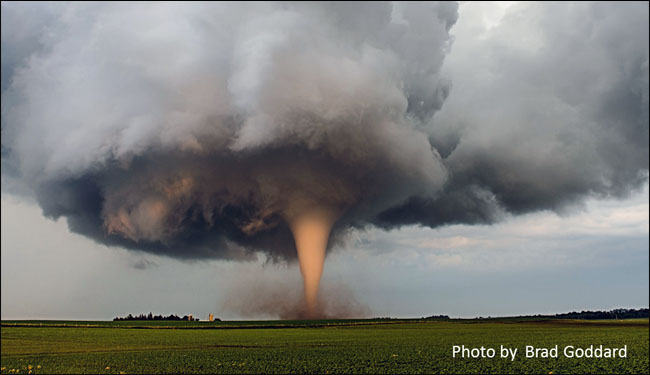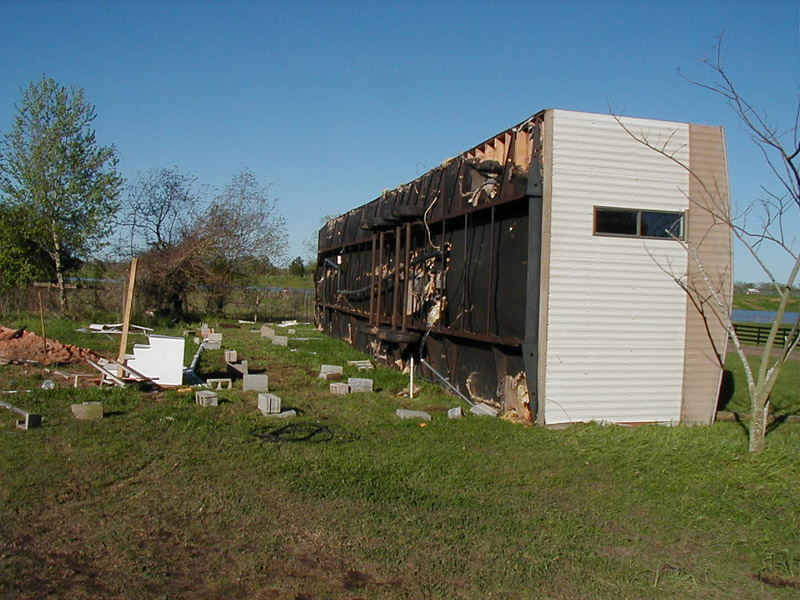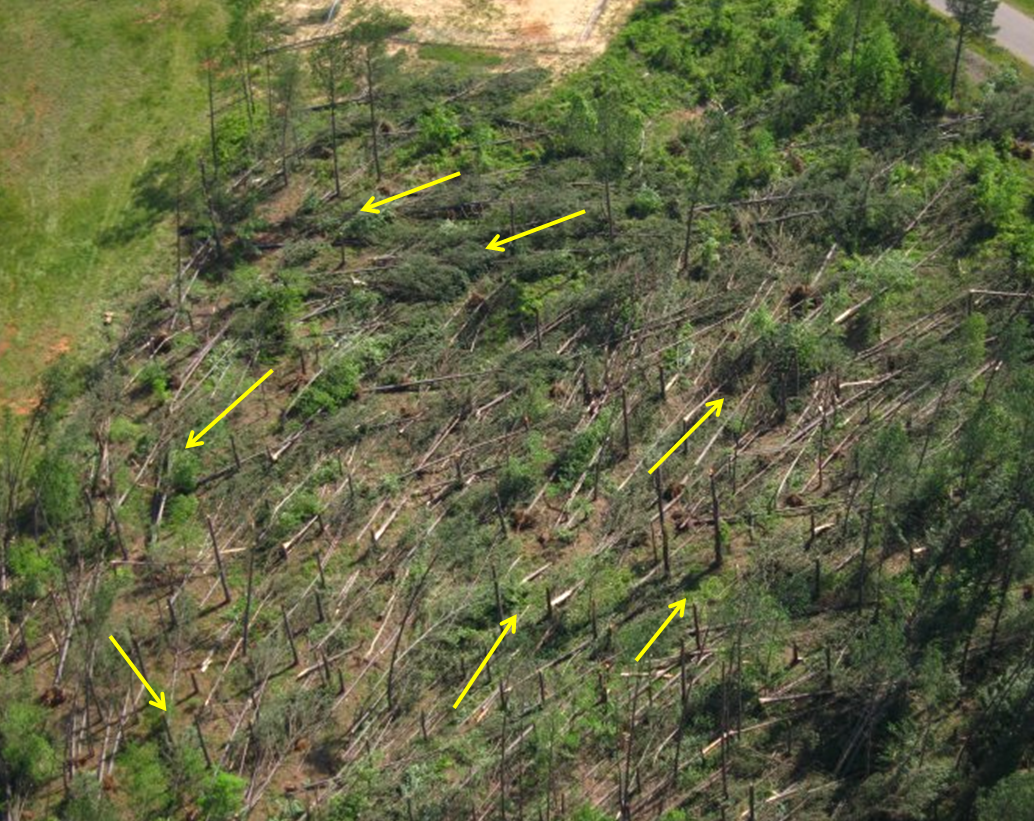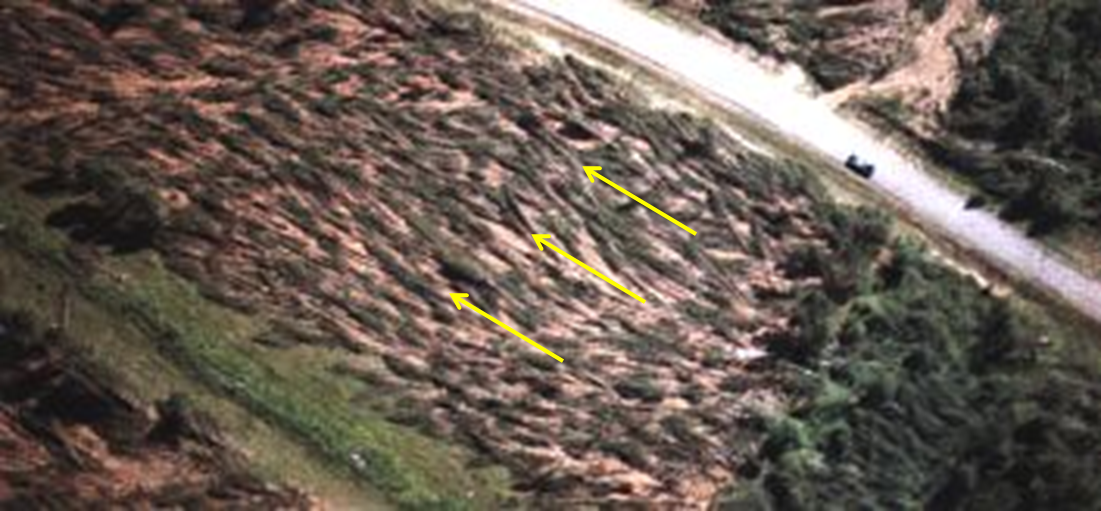One frequent question we get is: “What’s the difference between a tornado and straight-line winds?” In today’s blog we explore that question.
According to the American Meteorological Society (AMS), a tornado is:
A rotating column of air, in contact with the surface, pendant from a cumuliform cloud, and often visible as a funnel cloud and/or circulating debris/dust at the ground.

You’ve no doubt seen a picture of a tornado before, they are often very photogenic and frightening. Tornadoes are essentially just a highly concentrated area of wind that is rotating around an axis. So what makes that different from straight-line wind damage? According to the AMS, straight-line winds are:
Used in the context of surface winds that inflict damage; to be distinguished from winds in tornadoes, which have significant curvature.

Both tornadoes and straight-line winds are usually produced by thunderstorms, which adds to the confusion. While it is sometimes obvious when a tornado has occurred (you can often see them coming!), it’s not always. Sometimes the tornado is wrapped in rain and you don’t know it’s coming until it strikes. If a thunderstorm produces severe wind damage, such as ripping the roof off a house, it is not uncommon for a tornado to be immediately pinned as the culprit. However, it’s not that simple. Straight-line winds of some magnitude occur with virtually every thunderstorm, because they are associated with cool air descending out of the storm. Those winds are not always severe, but they are far more common than tornadoes. The key difference between tornadoes and straight-line winds is that straight-line winds are not rotating.
So, how can you tell the difference between a tornado and straight-line winds? Here are some things to look for:
- Was the damage very localized? Was one house completely destroyed, but the one beside it was seemingly untouched? If so, it’s probably a tornado. Straight-line winds tend to occur over a relatively large area, making it unlikely that there would be such a dramatic difference in damage over a short distance.
- Is debris scattered around randomly, or does it follow a clear direction? Tornadoes tend to toss debris all over the place, whereas straight-line winds will blow everything in one direction.


Straight-line winds have been known to exceed 150 km/h, easily strong enough to cause severe structural damage. The weakest tornadoes usually have wind speeds of only around 100 km/h. However, the winds in the strongest tornadoes can exceed 300 km/h. The fact that weak tornadoes and straight-line winds often have wind speeds of comparable magnitude is another reason why they often get mixed up.
Ok, so we’ve established what tornadoes and straight-line winds are, but how about plow winds, downbursts, microbursts, and squalls? Actually, these are all just other words to describe straight-line winds. While there are some technical differences between those terms, they are all forms of non-tornadic winds, usually lumped into the category of straight-line winds.
So next time you hear about wind damage on the news, impress your friends – tell them the difference between tornadoes and straight-line winds!




